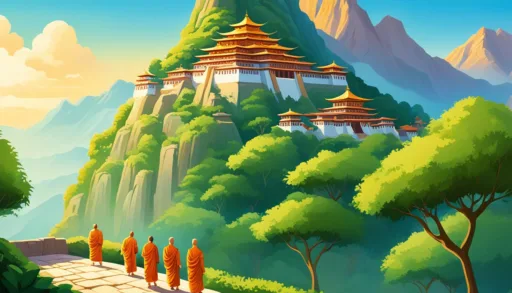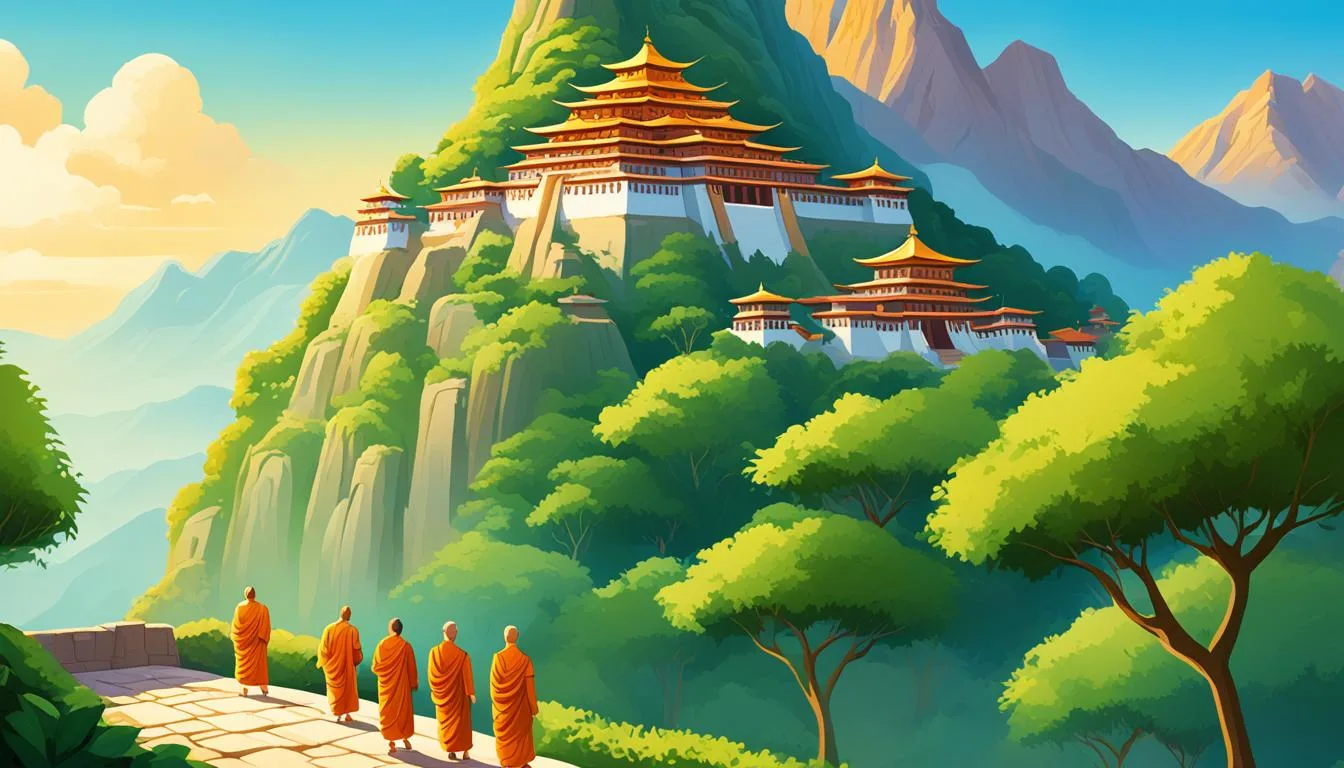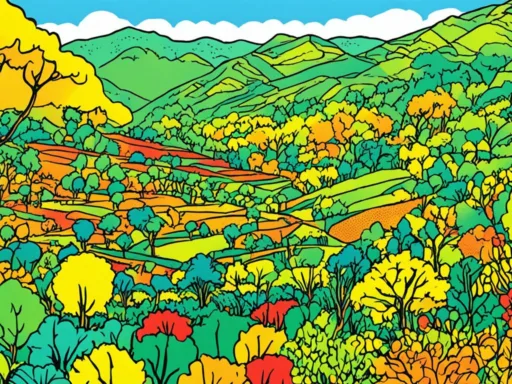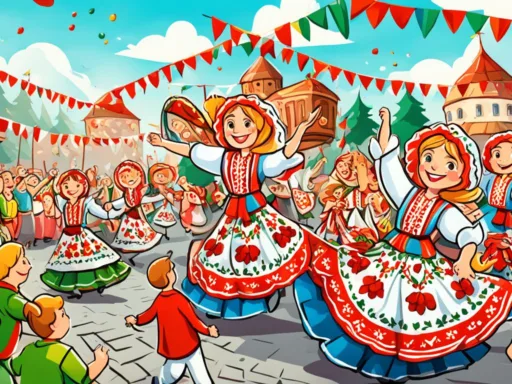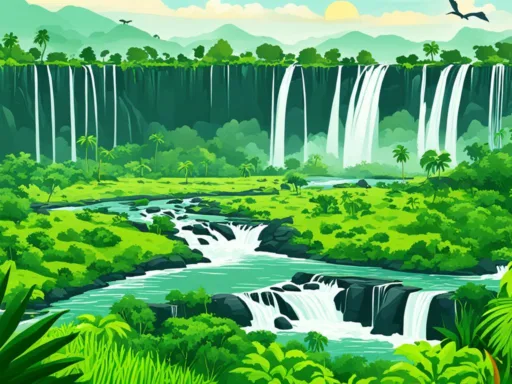When dreaming of distant lands, majestic temples, and untamed natural beauty, one destination that often whispers to the soulful traveler is Myanmar. But when is the Best Time to Visit Myanmar? Tucked away in the heart of Southeast Asia, Myanmar’s entrancing vistas are best embraced during a time that not only aligns with pleasant Myanmar weather but also synchronizes with spiritual festivities and cultural vibrancy. However, could there be a secret season that elevates your travel experience beyond the expected?
Myanmar travel tips often suggest planning your journey around the top season in Myanmar, when the ichor of life and tradition flows through its enchanting streets and sacred shrines. Tourists aim to visit Myanmar in the right season to witness the ancient and the sacred, but each season carries its own unique magic. Delving into this will unveil the most optimal time for you to become part of Myanmar’s living story – a Myanmar tourist season that offers more than the traditional itinerary and immerses you in unspoken wonder.
Key Takeaways
- Discern the peak travel periods and their benefits for sightseeing and cultural experiences.
- Understand the importance of weather patterns in planning a Myanmar itinerary.
- Learn about spiritual sites and festivals that mark the cultural richness of Myanmar.
- Gain insights into the lesser-known yet fascinating times to explore this Southeast Asian gem.
- Acquire essential Myanmar travel tips for a seamless and enriching visit.
Embarking on a Journey to Myanmar’s Sacred Temples
As travelers seek to explore Myanmar during the best time, a temple tour remains a beacon illuminating Myanmar’s history, culture, and spirituality. Magnificent structures across the land tell stories of devotion and grandeur, beckoning those with a passion for discovery.
At the heart of Myanmar’s spiritual landscape is the Shwedagon Pagoda, an edifice symbolizing the wealth of Buddhist architecture. Crowned with a 99-meter golden stupa, it embodies not only Myanmar’s religious fervor but also houses sacred Buddhist relics.
Yangon’s venerated Sule Pagoda stands as a 44-meter spire of serenity amid the bustling cityscape, echoing centuries of religious significance and political history. This extraordinary landmark skillfully blends the essence of spirituality with the everchanging tapestry of time.
The Bagan Myanmar temples represent a timeless montage of architectural brilliance and religious dedication. Among the sea of sacred sites, the striking Shwesandaw Pagoda and the meticulously crafted Ananda Temple stand out, drawing not only devoted pilgrims but also enraptured tourists.
| Temple | Spiritual Significance | Architectural Style |
|---|---|---|
| Shwedagon Pagoda | Central hub for Buddhist worship, housing holy relics | Golden stupa exemplifying ornate Burmese design |
| Sule Pagoda | Spiritual and historical core of Yangon | Octagonal shape rising to its gilded dome and spire |
| Shwesandaw Pagoda | Popular for pilgrimage and sunset views | Whitewashed pyramid style with terraces |
| Ananda Temple | Revered site of Buddhist scholarship and art | Monumental structure with frescoes and carved teak doors |
Each stop on this temple journey engages deeply with the threads of Myanmar’s history, culture, and spirituality, offering Myanmar travel tips that go beyond mere sightseeing. These are experiences crafted not just to see, but to be felt within the soul, making the best time to travel intrinsically tied to personal reflection and openness to the profound legacy of Myanmar.
Understanding Myanmar’s Climate for the Ideal Trip
As you contemplate when to travel to Myanmar, it’s crucial to take into account the country’s diverse climate. Each season brings its own set of charms and challenges, impacting not only the general Myanmar weather but also specific experiences like the hot days in Bagan or the seasons of rain in Shwedagon Pagoda.
Seasonal Highlights: From Cool to Rainy Seasons
The cool season, from November to February, is often considered the optimal time for visitors. With warm days and dry air, the weather fosters ideal conditions for engaging in outdoor activities and sightseeing, including taking a memorable Chindwin River cruise. However, this is also the peak tourist season, which may affect travel budgets and accommodation availability.
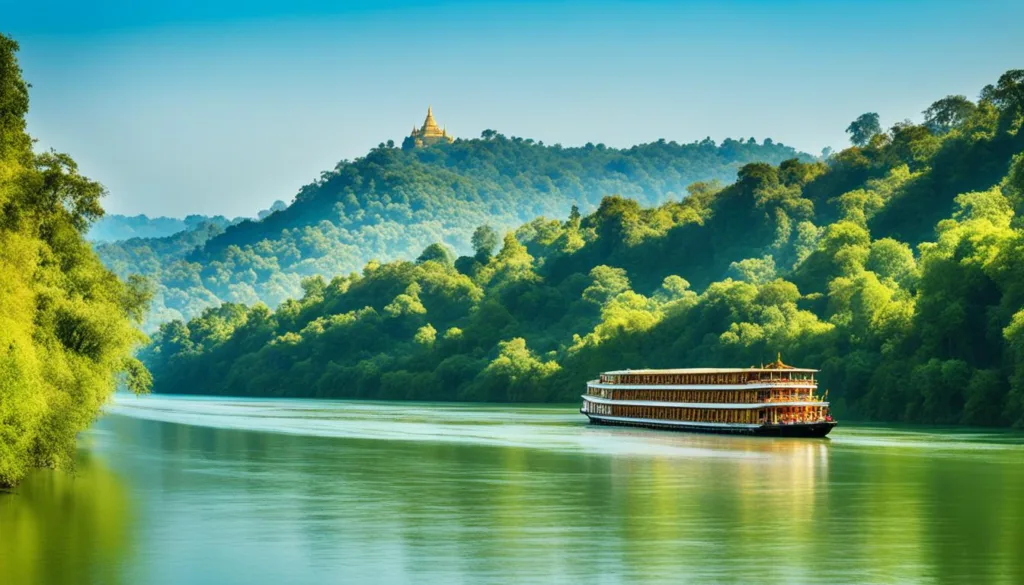
Hot Season: Embrace the Warmth
March to May marks Myanmar’s hot season, and while temperatures can soar, there are upsides to visiting during this period. Bagan can be particularly intense with scorching heat, but the fewer crowds allow for a more personal encounter with its timeless pagodas. Planning a trip during this time may also yield better deals on hotels and fewer tourists at key destinations.
Navigating the Rainy Season: Monsoon Travel Tips
From June to October, Myanmar enters its monsoon season. This period is characterized by significant rainfall, which can transform landscapes into lush, verdant paradises. While rain may sound discouraging, it also brings advantages such as the full navigability of the Chindwin River, inviting travelers for a unique cruising experience. Be mindful of the Myanmar weather’s fickle nature; pack accordingly, with layers to handle transitions from damp conditions outside to air-conditioned environments indoors.
| Season | Weather | Travel Activities |
|---|---|---|
| Cool (Nov – Feb) | Warm days, Dry air | Irrawaddy River Cruise, Temple Visits |
| Hot (Mar – May) | High Heat, Clear skies | Bagan Exploration, Cultural Experiences |
| Rainy (Jun – Oct) | Heavy Rainfall, Lush Landscapes | Chindwin River Cruising, Nature Photography |
Best Time to Visit Myanmar: Months and Reasons
When it comes to discovering the charm and beauty of Myanmar, timing plays an essential role. With a focus on Myanmar travel tips and the nation’s tourist season, it’s noteworthy that the ideal time to go to Myanmar extends from November through March. During this top season in Myanmar, you’ll be greeted with amiable weather conducive to outdoor activities and exploration—perfect for those seeking to delve into the heart of Myanmar’s culture and history.
Festivities bring life and color to the streets, especially during the year-end and early year months. The Schwezigon Pagoda Festival in Bagan during November, and Yangon’s Shwedagon Pagoda Festival in February and March, are vibrant cultural anchors that offer a glimpse into Myanmar’s rich traditions through local music, dance, and irresistible food stalls.
| Season | Months | Cultural Highlights | Travel Considerations |
|---|---|---|---|
| High Season | November to March | Schwezigon Festival, Shwedagon Festival | Best weather for temple visits & river tours |
| Low Season | April to October | Fewer festivals, but less crowded | Hotter temperatures & monsoonal conditions |
If you’re contemplating Myanmar river tours, this period is also prime for cruising the serene waters. From the legendary Irrawaddy to the picturesque Chindwin, river journeys present Myanmar in a different light, offering a tranquil pace to observe local lifestyles up close.
The low season falls between April and October, with substantial rainfall, especially from May to June. While this period is not without its challenges, it can be an excellent time for more intrepid travelers. With fewer tourists, you might enjoy more authentic interactions and the lush, verdant landscapes that the rains bring.
Whatever your travel desires, keep these Myanmar travel tips in mind, and remember that choosing the right time for your visit can significantly enhance the richness and enjoyment of your overall experience.
A Guide to Myanmar’s Cultural and Festival Calendar
Myanmar is a tapestry of vibrant traditions and celebrations, each woven through the country’s annual calendar. Seasoned travelers and cultural enthusiasts mark their itineraries with Myanmar’s bountiful festivities, a spectacle of heritage and jubilation. Amid these, Myanmar’s cultural festivals and pagoda celebrations are not merely events; they are a gateway to the soul of this Southeast Asian gem. Highlighting significant epochs in Burmese history and spirituality, they draw crowds from both the local populace and the international community, eager to partake in this colorful cultural tapestry.
Festivals of Light, Tradition, and Joy
The Myanmar calendar is punctuated with pagoda festivals, grandiose events dedicated to the spiritual landmarks that pepper the country. Each pagoda festival, such as the Shwedagon Pagoda Festival, is a festive occasion, featuring a blend of religious observance and mirthful celebration. This is when the timeless beauty of Myanmar’s traditions truly shines as locals indulge in the festival’s vibrant processions, music, and dance performances. These festivals are prime times for visitors to immerse themselves in Myanmar’s historical lore and communal joy. It’s not simply about sightseeing; it is an experiential dive into the heart of Myanmar’s cultural allure.
Experiencing Myanmar’s Traditional New Year Celebrations
When the Thingyan Water Festival springs forth, Myanmar erupts in jubilation, welcoming the traditional New Year. Commonly taking place in April, this water festival is akin to a national rain dance, symbolizing purification and the washing away of the old year’s sins. Joyous and boisterous, water is splashed generously among participants, forging shared laughter and communal bonds. The streets transform into arenas of celebration, music, and traditional performances, reflecting the vibrant spirit that defines the Burmese people. These timeless traditions elevate the experience of all who venture into the enchanting realms of Myanmar during these peak seasons of cultural exuberance.
Exploring Myanmar’s Natural Landscapes in the Right Season
Myanmar’s allure is deeply rooted in its natural landscapes, each offering unique experiences that hinge upon the season. To uncover all that Myanmar has to offer, timing your visit can make all the difference. The country’s diverse environment ranges from lush hiking trails and pristine beaches to tranquil river cruises and adventurous waterway expeditions.
Hiking Trails and Beach Escapes: When to Go
For enthusiasts of trekking in Myanmar and beach-goers alike, the Best Time to Visit Myanmar for these activities is between November and February. The Myanmar weather during these cool and dry months is conducive to outdoor adventures. Whether it’s the winding paths of the Shan Hills or the tranquil stretches of Ngapali beach, one will find the climate perfect for exploration.
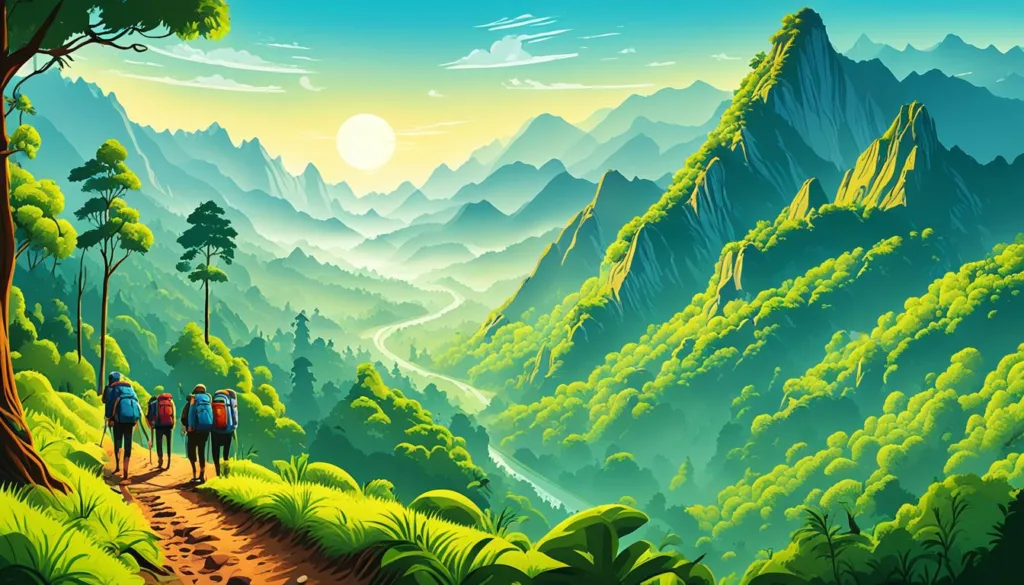
River Cruises: Perfect Timing for Serenity
For those seeking a more serene experience, river cruises provide a captivating view of Myanmar’s vistas. The Irrawaddy and Chindwin rivers serve as gateways to indulgent experiences. Serene river cruises during the November to February window promise clear skies and gentle breezes, enhancing every tranquil journey. Conversely, the monsoon season beckons adventurers to a unique Chindwin River adventure, where elevated water levels make hidden areas accessible to daring explorers.
Cultural Etiquette and What to Pack for Myanmar
Embarking on a journey through Myanmar necessitates an understanding of local traditions and preparation for diverse climatic conditions. Being mindful of cultural etiquette in Myanmar enhances your experience, ensuring that you both respect and relish the cultural heritage of this mesmerizing country. Below, discover the do’s and don’ts of dressing for Myanmar’s weather and sacred spaces, and find out what essentials to include in your travel luggage.
Respectful Attire: Dressing for Temples and Traditions
When it comes to dressing for Myanmar’s weather and respecting sacred traditions, it’s important to consider the religious and cultural contexts of the places you’ll visit. Respectful temple attire not only honors the local customs but can also deepen your connection to Myanmar’s spiritual heritage. For temple visits, clothing should be modest: cover your shoulders and knees to show reverence at these holy sites. Avoid wearing any attire bearing images of Buddha or other religious iconography, as this can be deeply offensive.
In addition to cultural etiquette in Myanmar, remember that footwear is often removed before entering a temple or a local’s home. Hence, opting for sandals or flip-flops can make this practice more convenient. For times when you’re more active or trekking through historical sites, comfortable walking shoes or hiking boots are advisable. Remember to dress in layers so you can adjust to the changing temperatures throughout the day and into the evening.
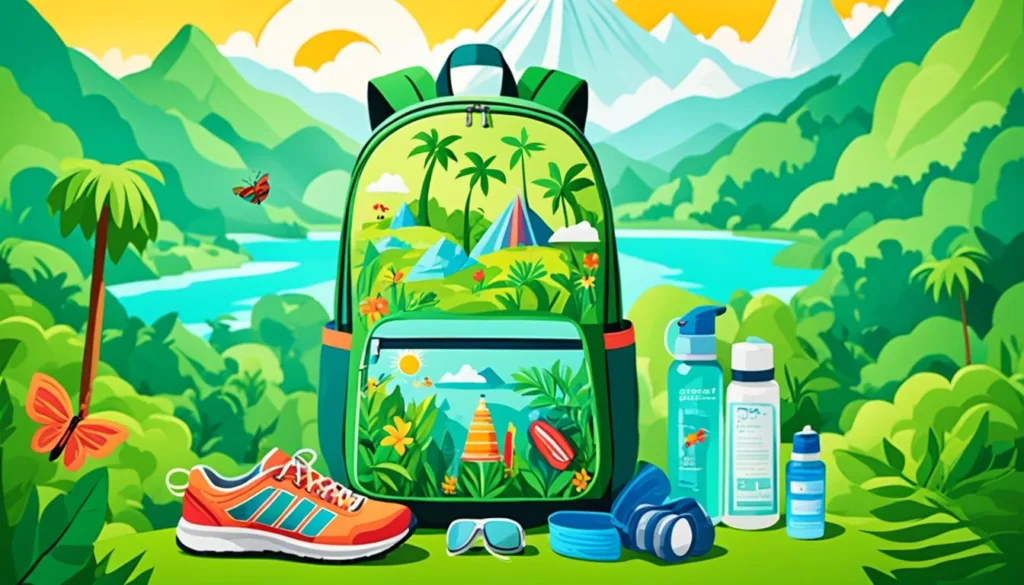
Essentials Checklist: Preparing for Myanmar’s Weather
To fully enjoy your travel to Myanmar, packing for the country’s varied climate is essential. Myanmar travel tips often emphasize the importance of being well-equipped for both sunny days and unexpected rain showers. Here’s a checklist to help ensure you have all you need:
- Light cotton clothes for the hotter days.
- A light jacket or sweater for cool evenings during peak travel season.
- Rain gear, such as a waterproof jacket or poncho, for the monsoon season.
- Sun protection, including sunscreen with high SPF, a wide-brimmed hat, and UV-blocking sunglasses.
- Personal medications and insect repellent to protect against mosquitoes.
- An umbrella for shade and shelter which can be used in both sunny and rainy conditions.
- Reusable water bottle to stay hydrated.
This essential checklist should serve as a foundation for what to pack for Myanmar, catering to its cultural norms and weather demands. By following these guidelines, you’ll be set to embrace the wonders of Myanmar with respect and openness, creating memories that will last a lifetime.
Myanmar’s Most Mesmerizing Temples: A Tourist’s Pilgrimage
When you explore Myanmar during the best time, a magical journey unfolds, leading you through a landscape rich with sacred sites and architectural wonders. Capturing the essence of spiritual Myanmar requires a pilgrimage to its celebrated temples, each with a story to tell and a visual splendor to share.
Yangon’s Architectural Splendors: Shwedagon and Sule Pagodas
The towering spire of Yangon Myanmar temples gleams with a divine aura, drawing visitors from around the world. The Shwedagon Pagoda, adorned with thousands of diamonds, captures the imagination with its sheer majesty and historical mystique. The Sule Pagoda, acting as both a spiritual beacon and a geographical point of reference for Yangon, remains a testament to the city’s enduring faith and history.
The Magical Temples of Bagan: Ananda and Dhammayangyi
Further into the heartland of tradition and devotion lies the archaeological expanse of Bagan Myanmar temples. The Ananda Temple, with its glistening gold façade and intricate design, is a masterpiece of Mon architecture. Not far from this glorified structure is the Dhammayangyi Pagoda, its colossal bulk hinting at a narrative filled with intrigue and ancient lore. Together, these sites provide a window into a past that has shaped an entire nation’s belief system.
| Temple Name | Location | Significance | Architectural Style |
|---|---|---|---|
| Ananda Temple | Bagan | Cultural significance; Resembling a Greek Cross | Mon hybrid architecture |
| Dhammayangyi Pagoda | Bagan | Largest of all temples; Burmese architectural style | Burmese standards with Indian influence |
| Shwedagon Pagoda | Yangon | Most sacred Buddhist pagoda; Contains relics of four Buddhas | Traditional Burmese stupa |
| Sule Pagoda | Yangon | Heart of the city; Historical and religious significance | Octagonal shape continues up to the bell and inverted bowl |
Visiting these ancient sites, one finds themselves deeply immersed in the quiet hum of recited prayers, the soft clinking of temple bells, and the heartfelt ardor that radiates from the stone-carved walls. To walk among these sacred pillars is to trace the footsteps of generations of worshippers who have found solace and spiritual direction within the hallowed chambers of Myanmar’s temples.
Conclusion
As we reflect on the mosaic of Myanmar’s seasons, we understand that each unfolds a chapter of an enriching narrative, where natural splendor joins hands with profound spirituality and a vibrant culture. To visit Myanmar in the right season is to step into a painting that breathes, pulses with the heartbeats of festivity, and whispers tales of history and devotion through its landscapes. Your itinerary must knit together not just places but experiences that resonate with Myanmar’s unique rhythm.
Reflecting on Myanmar’s Seasons: An Enriching Experience
The Myanmar tourist season offers a window to the soul of this enigmatic land, with each period providing a different lens through which to appreciate its intrinsic beauty. The ideal journey through Myanmar is punctuated by encounters that are as much cultural and spiritual as they are visual—with golden pagodas, tranquil river scenes, and lively festivals painting a picturesque backdrop for an unforgettable adventure.
Planning Your Visit: Ensuring a Memorable Journey
Ahead of your visit, it’s imperative to infuse your plans with Myanmar travel tips, to navigate the complexities of climate, culture, and spiritual etiquette effortlessly. By timing your visit thoughtfully, you invoke the promise of not just an exploration of the spectacular vistas but also a deep engagement with the essence of Myanmar’s enduring allure. Here, your journey transcends the ordinary, inviting you to intertwine with the fabric of a place etched in both time and the sublime.
FAQ
What is the best time to visit Myanmar?
The ideal time to visit Myanmar is during the cool season, between November and February, when the weather is warm and dry, enabling comfortable travel and exploration of temples and cultural sites.
Can you still visit Myanmar during the hot season?
Yes, while the hot season from March to May is challenging due to high temperatures, it often comes with fewer crowds and potential accommodation discounts, allowing for a unique travel experience.
Is it advisable to travel to Myanmar during the rainy season?
Traveling during the rainy season from June to October can come with the inconvenience of heavy rainfall. However, it also presents unique opportunities such as lush landscapes and the navigability of the Chindwin River, which can be quite rewarding for adventurous travelers.
When are Myanmar’s primary cultural festivals held?
Major cultural festivals like the Shwedagon Pagoda festival in February/March, the Schwezigon Pagoda festival in Bagan in November, and the Thingyan Water Festival of Myanmar, which celebrates the Burmese New Year in April, offer vibrant, immersive experiences into the country’s traditions.
What are the temple etiquette and dress code for visiting Myanmar?
Visitors should dress conservatively with shoulders and knees covered to respect the sanctity of religious sites. Images of Buddha on clothing are inappropriate, and easy-to-remove footwear is recommended for entering pagodas and other sacred spaces.
What should you pack for a trip to Myanmar?
Depending on the season, pack light cotton clothes, a light jacket for the evenings, rainproof gear for the monsoon season, walking shoes or hiking boots, sun protection, and culturally respectful attire for temple visits.
What is the hottest time of the year in Bagan?
Bagan experiences its hottest temperatures during the hot season, specifically between March and May, where temperatures can soar, so staying hydrated and protected against the sun is crucial.
Are there certain times when it’s not recommended to travel to Myanmar?
Each season has its own challenges and advantages, but generally, it’s less recommended to travel from May to June, the start of the monsoon, when heavy rainfall can significantly disrupt travel plans.
What should I consider when planning my visit to coincide with Myanmar’s tourist season?
During the peak tourist season, from November to March, it’s wise to book accommodations and transportation in advance due to greater demand, and be prepared for higher costs and busier sites.
When is the best time for river cruises in Myanmar?
The best time for serene river cruises along the Irrawaddy and Chindwin Rivers is during the cool season, from November to February when the weather is favorable with clear skies and mild temperatures.
